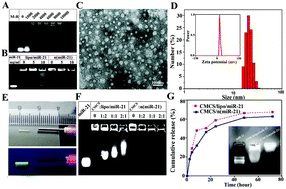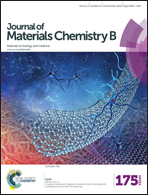An injectable miRNA-activated matrix for effective bone regeneration in vivo†
Abstract
The delivery of miRNAs that can promote osteogenic differentiation may be promising for bone regeneration. However, low transfection efficiency into cells, especially stem cells, limits in vivo applications. Thus, an injectable miRNA in situ delivery system was designed. miRNAs were encapsulated within nanocapsules which were further entrapped into an O-carboxymethyl chitosan (CMCS) network via electrostatic interactions. In this miRNA-activated matrix system, miRNAs were encapsulated within the polymer shells rather than physically adsorbed onto the surface to avoid leakage of miRNA and offer better stability for cell transfection. microRNA-21 (miR-21) is an osteogenic-related miRNA and it is chosen as the gene model in the current study. Delivery of miR-21 nanocapsules by CMCS significantly promoted the osteogenic differentiation of human umbilical cord mesenchymal stem cells (hUMSCs) as evidenced by up-regulation of osteogenic markers such as alkaline phosphatase (ALP) and runt-related transcription factor 2 (RUNX-2). Also the delivery system promoted bone formation (2.4-fold, p < 0.05) compared to controls. Thus, the current strategy provides not only substantial miRNA protection and better cell transfection efficacy but also has a biodegradable microenvironment with local and sustained gene release, which significantly enhances bone regeneration in vivo.


 Please wait while we load your content...
Please wait while we load your content...